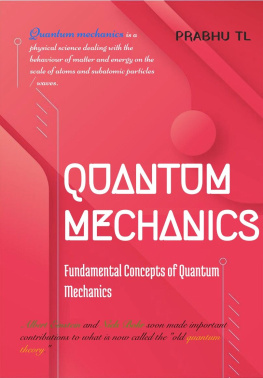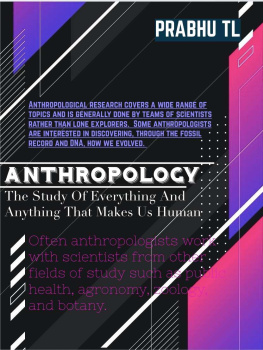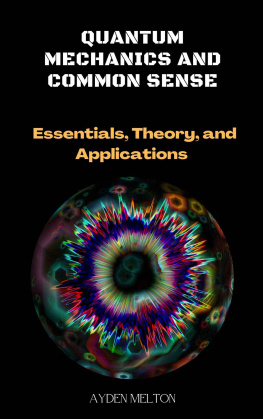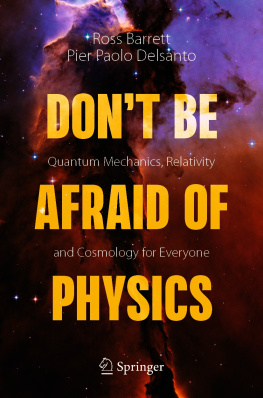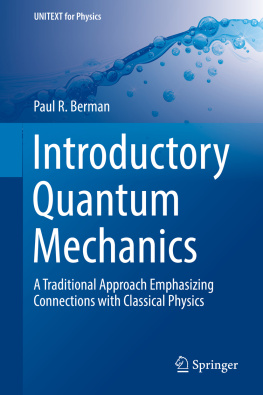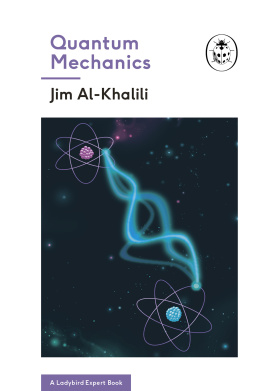QUANTUM MECHANICS
Fundamental Concepts of Quantum Mechanics
Prabhu TL

Nestfame Creations Pvt. Ltd.
[ Quantum Mechanics ]
Copyright [2021] Prabhu TL. All rights reserved.
Publisher - Nestfame Creations Pvt. Ltd.
Publisher Website - www.nestfamecreations.com
The contents of this book may not be reproduced, duplicated or transmitted without direct written permission from the Author .
Under no circumstances will any legal responsibility or blame be held against the publisher for any reparation, damages, or monetary loss due to the information herein, either directly or indirectly.
Author - Prabhu TL
Legal Notice:
This book is copyright protected. This is only for personal use. You cannot amend, distribute, sell, quote or paraphrase any part or the content within this book without the consent of the author.
Disclaimer Notice:
Please note the information contained within this document is for educational and entertainment purpose only .every attempt has been made to provide accurate, up to date and reliable complete information. No warranties of any kind are expressed or implied. Please consult a licensed professional before attempting any techniques outlined in this book .
By reading this document, the reader agrees that under no circumstances are is the author responsible for any losses, direct or indirect, which are incurred as a result of the use of information contained within this document, including, but not limited to, __eRrors, omissions, or inaccuracies.
PREFACE
Quantum mechanics is a physical science dealing with the behaviour of matter and energy on the scale of atoms and subatomic particles / waves.
It also forms the basis for the contemporary understanding of how very large objects such as stars and galaxies, and cosmological events such as the Big Bang, can be analyzed and explained.
Quantum mechanics is the foundation of several related disciplines including nanotechnology, condensed matter physics, quantum chemistry, structural biology, particle physics, and electronics.
The term "quantum mechanics" was first coined by Max Born in 1924.
The acceptance by the general physics community of quantum mechanics is due to its accurate prediction of the physical behaviour of systems, including systems where Newtonian mechanics fails.
Even general relativity is limited -- in ways quantum mechanics is not -- for describing systems at the atomic scale or smaller, at very low or very high energies, or at the lowest temperatures.
Through a century of experimentation and applied science, quantum mechanical theory has proven to be very successful and practical.
The foundations of quantum mechanics date from the early 1800s, but the real beginnings of QM date from the work of Max Planck in 1900.
Albert Einstein and Niels Bohr soon made important contributions to what is now called the "old quantum theory."
However, it was not until 1924 that a more complete picture emerged with Louis de Broglie's matter-wave hypothesis and the true importance of quantum mechanics became clear.
Some of the most prominent scientists to subsequently contribute in the mid-1920s to what is now called the "new quantum mechanics" or "new physics" were Max Born, Paul Dirac, Werner Heisenberg, Wolfgang Pauli, and Erwin Schrdinger.
Later, the field was further expanded with work by Julian Schwinger, Sin-Itiro Tomonaga and Richard Feynman for the development of Quantum Electrodynamics in 1947 and by Murray Gell-Mann in particular for the development of Quantum Chromodynamics.
The interference that produces colored bands on bubbles cannot be explained by a model that depicts light as a particle.
It can be explained by a model that depicts it as a wave.
The drawing shows sine waves that resemble waves on the surface of water being reflected from two surfaces of a film of varying width, but that depiction of the wave nature of light is only a crude analogy.
Early researchers differed in their explanations of the fundamental nature of what we now call electromagnetic radiation.
Some maintained that light and other frequencies of electromagnetic radiation are composed of particles, while others asserted that electromagnetic radiation is a wave phenomenon.
In classical physics these ideas are mutually contradictory.
Ever since the early days of QM scientists have acknowledged that neither idea by itself can explain electromagnetic radiation.
Despite the success of quantum mechanics, it does have some controversial elements.
For example, the behaviour of microscopic objects described in quantum mechanics is very different from our everyday experience, which may provoke some degree of incredulity.
Most of classical physics is now recognized to be composed of special cases of quantum physics theory and/or relativity theory.
Dirac brought relativity theory to bear on quantum physics so that it could properly deal with events that occur at a substantial fraction of the speed of light.
Classical physics, however, also deals with mass attraction (gravity), and no one has yet been able to bring gravity into a unified theory with the relativized quantum theory.
Quantum mechanics is the branch of physics relating to the very small.
It results in what may appear to be some very strange conclusions about the physical world. At the scale of atoms and electrons, many of the equations of classical mechanics , which describe how things move at everyday sizes and speeds, cease to be useful. In classical mechanics, objects exist in a specific place at a specific time. However, in quantum mechanics, objects instead exist in a haze of probability; they have a certain chance of being at point A, another chance of being at point B and so on.

Three revolutionary principles
Quantum mechanics (QM) developed over many decades, beginning as a set of controversial mathematical explanations of experiments that the math of classical mechanics could not explain. It began at the turn of the 20th century, around the same time that Albert Einstein published his theory of relativity , a separate mathematical revolution in physics that describes the motion of things at high speeds. Unlike relativity, however, the origins of QM cannot be attributed to any one scientist. Rather, multiple scientists contributed to a foundation of three revolutionary principles that gradually gained acceptance and experimental verification between 1900 and 1930. They are:
Quantized properties : Certain properties, such as position, speed and color, can sometimes only occur in specific, set amounts, much like a dial that "clicks" from number to number. This challenged a fundamental assumption of classical mechanics, which said that such properties should exist on a smooth, continuous spectrum. To describe the idea that some properties "clicked" like a dial with specific settings, scientists coined the word "quantized."
Particles of light : Light can sometimes behave as a particle. This was initially met with harsh criticism, as it ran contrary to 200 years of experiments showing that light behaved as a wave; much like ripples on the surface of a calm lake. Light behaves similarly in that it bounces off walls and bends around corners, and that the crests and troughs of the wave can add up or cancel out. Added wave crests result in brighter light, while waves that cancel out produce darkness. A light source can be thought of as a ball on a stick being rhythmically dipped in the center of a lake . The color emitted corresponds to the distance between the crests, which is determined by the speed of the ball's rhythm.
Next page
